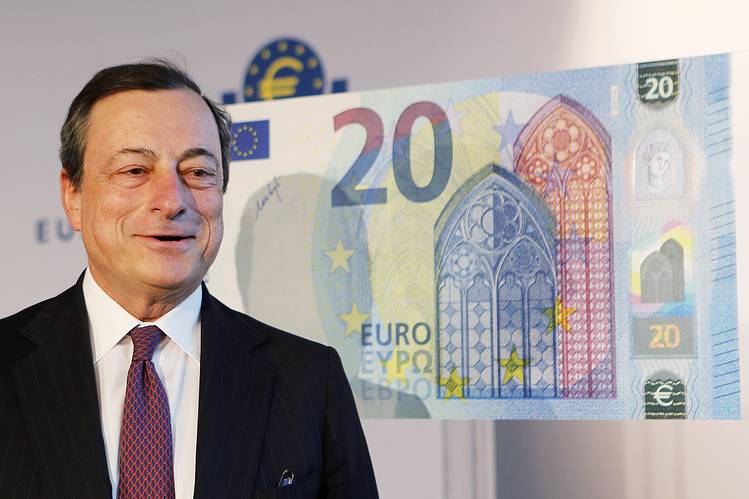Markets
The Evolving EU-Nigeria Social, Economic Alliance
Published
8 years agoon

- The Evolving EU-Nigeria Social, Economic Alliance
The European Union (EU) has had a lot of successes since it was founded on November 1, 1993, in Maastricht, The Netherlands.
Although the body’s activities actually started as far back as the 1950s with a different nomenclature, it formerly became a union in 1993.
Beginning as a pretty much amorphous geo-political entity with only six countries as members, it now covers a large portion of the European continent.
It was founded upon numerous treaties and has undergone expansions that have taken it from the founding six member states to 28, a majority of the states in Europe.
However, with the result of the Brexit, the number of member states is more accurately fixed at twenty-seven and half, pending when the negotiation of socio-economic and political relations between the EU and the United Kingdom is completed.
There is also growing global apprehension that with the surprising Brexit outcome, the shocking election of Donald Trump as the United States president and other seeming nationalist positions being taken by more prosperous nations around the world, the era of globalisation may be ebbing out, leaving regional bodies like the EU in need of urgent strategic reforms to remain relevant.
Conversely though, for its relationship with Africa, the EU has achieved quite a bit. From the EU observer missions to the various elections within the African continent which have tacitly forced many African dictators to play fairly during electioneering, to massive economic aids and cooperation, Europe has to a considerable extent shown commitment the well being of Africa.
Apart from Nigeria which has put up an argument against some provisions of the Economic Partnership Agreement (EPA) between the EU and Africa, Caribbean and Pacific (ACP) countries, most of the other countries and regions have endorsed the EPA, paving the way for massive trading between them and Europe.
EU Effort in Nigeria
The primary instrument for EU assistance is the European Development Fund (EDF). The current allocation to Nigeria from this global fund is around €512 million over the period 2014 to 2020. In addition, the EU provides funding from a number of other aid instruments such as humanitarian aid, support for civil society and assistance to fight terrorism.
The three priority sectors for the current development EU assistance are: In the social sector, improving access to quality primary health care, the fight against malnutrition and measures to strengthen resilience and promote social protection. Included here are support for routine and polio immunization campaigns, activities to improve access to clean water and sanitation, and reinforce livelihoods and revenue generation in rural populations through food and nutrition security.
As for the economy, the EU is helping to increase access to sustainable electricity, supporting efforts to improve conditions for economic growth with a focus on improving competitiveness and diversification, development of renewable energy and energy efficiency measures and strengthening public finance systems at state and federal levels, to create a stable environment for trade and investment activities.
In the governance sector, there is continued support for action to strengthen democracy in Nigeria, the fight against corruption, the fight against trafficking of human beings, drugs and small arms, the reform of the justice system, measures to manage migration more efficiently and effectively, and capacity building for civil society organisations.
All current European Union (EU) development cooperation activities in Nigeria are funded primarily through the allocation of EUR 689 million from the 10th European Development Fund (EDF) to the EU/Nigeria National Indicative Programme (NIP).
The only 11th EDF operations that are already being implemented are those funded from the Bridging Facility.
These are primarily an additional EUR 15 million towards the electoral process leading up to the elections in February 2015, an additional EUR 8.5 million towards the campaign to eradicate polio in Nigeria and EUR 1.5 million to provide psycho-social support and schools in a box to communities directly affected by Boko Haran violence in Borno and especially those in the Chibok area.
Operations in Nigeria funded under the EU Instrument contributing to Stability and Peace (IcSP) formerly called the Instrument for Stability and from various EU Thematic Budget lines are also included as is EU funded humanitarian assistance in Nigeria.
A Fresh Euro 44bn Fund
Also, last weekend, the EU announced that it has launched a €44 billion Africa economic development fund aimed at helping Nigeria and other African countries drive economic growth and development.
The Vice President, EU, Digital Single Market, Andrus Ansip, said the EU is already developing a strategic framework for the implementation and disbursement of the fund, maintaining that the EU is also designing security measures to ensure the fund is effectively and efficiently disbursed.
Ansip during a press briefing in Lagos explained that the fund which would be made available for disbursements in first quarter 2018 as credit money, was designed to help developing economies cover identified risks to attract foreign direct investments (FDIs).
The fund is also going to help the digital industry in Nigeria which the EU sees as one of the areas with the strongest growth potential.
He said: “Our aim is to help developing economies. We have decided to create the European external investment fund which is targeted at covering main risks to attract private investment. This kind of fund was really efficient in the European union (EU) where we created investment for strategic investment and we believe this fund will go a long way to help the African economy.”
According to him, the fund would go a long way in reducing the number of refugees who seek greener pastures in European countries, saying that in the last two years, Europe has experienced the greatest mass movement of people since the second World war.
He pointed out that more than 1 million refugees and migrants have arrived in the EU, adding that EU has agreed on a range of measures to deal with the crisis.
“This fund meant for supporting development in African countries will be beneficial to the European countries as you know today that most people in Africa prefer to leave African countries to seek greener pastures in European countries. We are faced with lots of refugee crisis. To tackle this menace, we can provide some help to those countries to help build their economies instead of seeking refuge in Europe,” he said.
He said: “Our aim is to support digital development in Africa and also help to build healthy economies in developing countries. The EU is the biggest donor of digital development aids. We believe the fragment of digital aid is little in developing countries, this is where we are.
The European Union wants to support digital development in Africa. We will like to provide financing to build strong and healthier economies in developing countries in Africa.”
He said digital development in Nigeria and in other African countries has grown rapidly, noting that internet penetration has grown to over 80 per cent where 100 per cent of Nigerians now has access to Internet services.
“The development was much more rapid when compared to Europe. I believe in digital development for the bright future of Africa,” he said.
He said funds are important for economic development, but stressed that ideas and how to cooperate with other African countries is even more critical to get more assistance of development funds.
He said African countries must create the right environment for digital development, create an effective regulatory environment that would have a much bigger influence than funds in the future of African countries.
Is the CEO and Founder of Investors King Limited. He is a seasoned foreign exchange research analyst and a published author on Yahoo Finance, Business Insider, Nasdaq, Entrepreneur.com, Investorplace, and other prominent platforms. With over two decades of experience in global financial markets, Olukoya is well-recognized in the industry.

You may like
-


Zhongshang Fucheng Moves to Auction Nigerian Properties in UK Following $70M Arbitration Award
-


Nigerians and Indians Lead UK Job Market Growth Amid Post-Brexit Migration Shifts
-


Violent Protests Erupt Across Nigeria, Leaving Six Dead and Many Injured
-


Nigerian President Tinubu Condemns Protest Plans Over Economic Woes
-


Nigeria to Suspend Import Levies on Food Crops to Ease Inflation Pressure
-


Nigeria Leads Africa in Private Equity Deals, Records $2.59 Billion in Q1 2024








